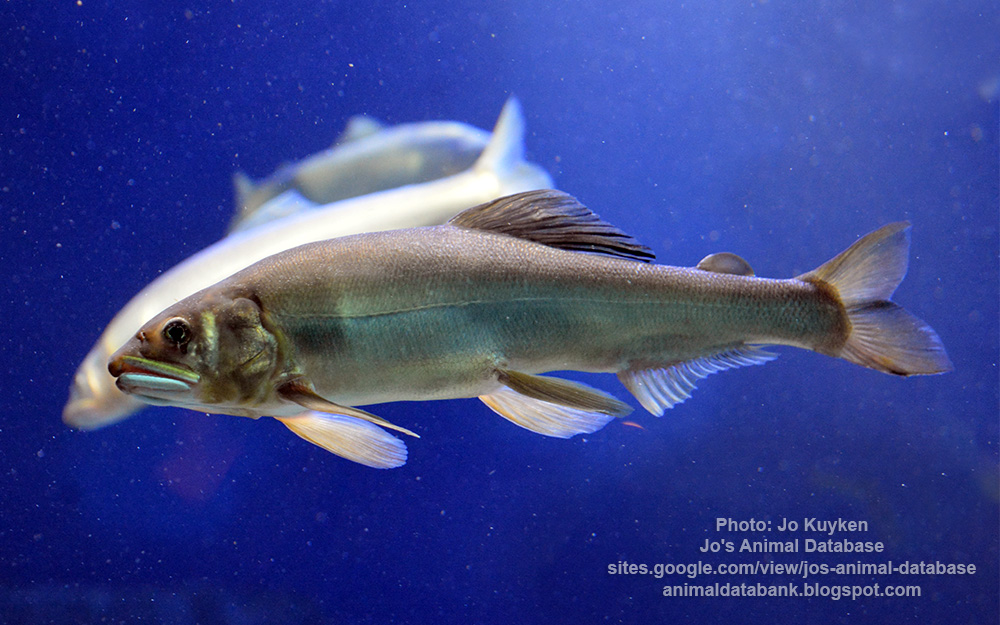Ayu sweetfish
(Plecoglossus altivelis)

Classification
General data
The ayu sweetfish (Plecoglossus altivelis), ayu or sweetfish, is a species of fish. It is the only species in the genus Plecoglossus and family Plecoglossidae. It is a relative of the smelts and other fish in the order Osmeriformes.
Native to East Asia, it is distributed in the northwestern Pacific Ocean along the coast of Hokkaidō in Japan southward to the Korean Peninsula, China, Hong Kong and northern Vietnam.
It is amphidromous, moving between coastal marine waters and freshwater lakes and rivers. A few landlocked populations also exist in lakes in Japan such as Biwa. Original wild populations in Taiwan became extinct in 1968 due to pollution and present extant populations were reintroduced from Japan in the 1990s.
The name sweetfish was inspired by the sweetness of its flesh. In reference to its typical one-year lifespan, it is also written as year-fish. Some individuals live two to three years. The ayu is the prefectural fish of Gunma Prefecture and Gifu Prefecture.
Subspecies
Two to three subspecies are recognized by some authors. Others do not distinguish the subtaxa.
P. a. altivelis (Temminck & Schlegel, 1846) (ayu, sweetfish)
P. a. chinensis Y. F. Wu & X. J. Shan, 2005 (Chinese ayu)
P. a. ryukyuensis M. Nishida, 1988 (Ryukyu ayu-fish) – endangered
An omnivore, the ayu feeds on algae, crustaceans, insects, sponges, and worms. It feeds on algae that accumulates on the rocks, scraping it off the rocks with their saw-shaped teeth. Adults typically maintain a feeding territory, but the form restricted to lakes and associated streams is schooling.
Although there are reports of ayu up to 70 cm (2.3 ft) long, a more typical maximum size for the species is about 30 cm (1 ft). The form restricted to freshwater is considerably smaller than the amphidromous form. The freshwater-restricted ayu of Lake Biwa that migrate into their spawning streams in the spring can reach up to about 15 cm (6 in) in length, but those that migrate later in the year, primarily in the autumn, only grow to 10 cm (4 in). This is caused by differences in the availability of food.










